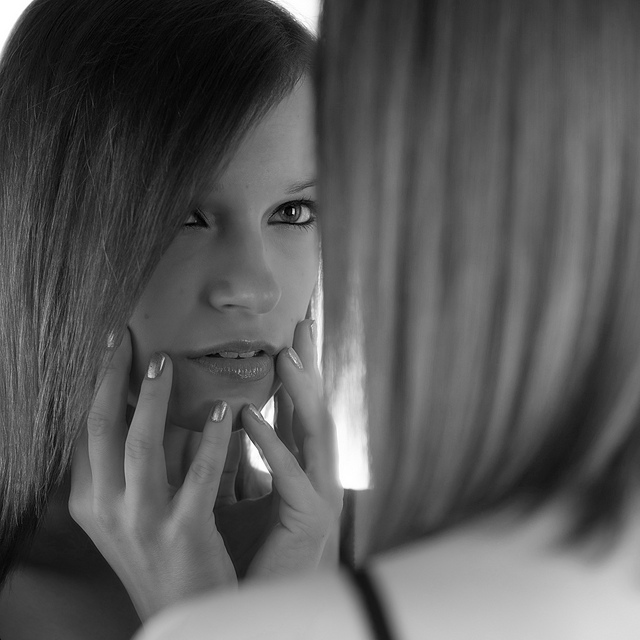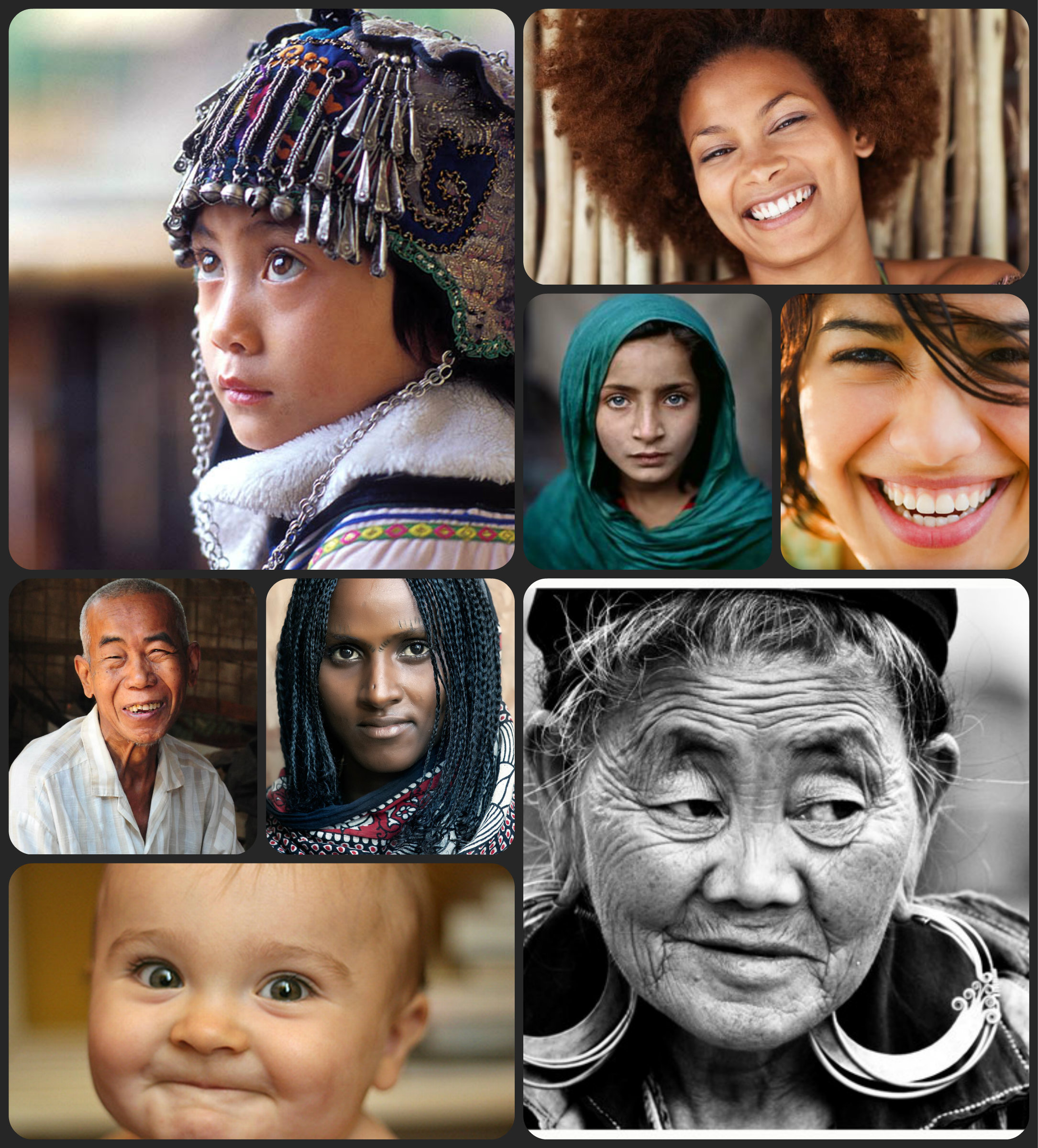This is a guest post by Holly Bird.
 When I was a teenager, the idea of beauty frustrated me. My concept of “beauty” back then came from advertisements and the pages of magazines. It was something to long for, something that I envied in others. It was a shallow quality, revolving around physical attractiveness. I understood beauty primarily as the good fortune of one’s genes or as something fabricated; either way, it wasn’t cultivated the way one could cultivate virtue. So, it didn’t make sense to me why beauty might be considered something virtuous, let alone something divine.
When I was a teenager, the idea of beauty frustrated me. My concept of “beauty” back then came from advertisements and the pages of magazines. It was something to long for, something that I envied in others. It was a shallow quality, revolving around physical attractiveness. I understood beauty primarily as the good fortune of one’s genes or as something fabricated; either way, it wasn’t cultivated the way one could cultivate virtue. So, it didn’t make sense to me why beauty might be considered something virtuous, let alone something divine.
What my sorry adolescent notion of beauty lacked was its connection to the good and the true, and its capacity as deeply transformative. The kind of beauty that people of faith seek, the beauty that we associate with the divine, is not the same kind of aesthetic attractiveness promised by cosmetics ads or design magazines. With a new year underway and a chance to see things through fresh eyes, I am gathering a few thoughts to help me better recognize the authentic beauty in our midst:
1. Beauty engages our senses. It appeals to our nature as embodied beings. Simone Weil writes of beauty as an “incarnation” of the divine in our world, like the sacraments. Just as the Word became flesh to bring God’s salvation to the world, God communicates grace with us through sensory experiences. Beauty is one medium by which God communicates with humanity.
2. Beauty is a reflection of the immanent and transcendent God. We can recognize beauty when we encounter it, yet it’s very difficult to attach a clear definition to beauty. Theologian Cecilia González-Andrieu describes how although not fully attainable, beauty continuously prompts our desire for it, just as our hearts quest for God who is present among us but remains unknowable in God’s fullness. We can know beauty by its qualities, but its essence is a mystery. Our pursuit of beauty is a representation our deepest human longing for God.
 3. Beauty “de-centers” us. Imagine hearing a breathtaking piece of music, or cresting a hill on a hike to be greeted with a stunning vista. Beauty makes us forget ourselves momentarily in an experience of transcendence. In these moments, the divine enters in and catches us by surprise. Weil writes that beauty helps us to renounce our “imaginary position as the center” of the world, opening us up to the possibility of loving our neighbor and the world around us.
3. Beauty “de-centers” us. Imagine hearing a breathtaking piece of music, or cresting a hill on a hike to be greeted with a stunning vista. Beauty makes us forget ourselves momentarily in an experience of transcendence. In these moments, the divine enters in and catches us by surprise. Weil writes that beauty helps us to renounce our “imaginary position as the center” of the world, opening us up to the possibility of loving our neighbor and the world around us.
4. Encountering beauty is not guaranteed to be a pleasurable experience (although it often is.) The deeper truth revealed by authentic beauty is what makes the encounter stand out as remarkable. If we believe beauty to be a quality of the divine, then it must reveal something of the divine in itself. The defining qualities of beauty are open to discussion, but I believe true beauty reveals God’s justice by fostering and defending human flourishing.
 5. Beauty promotes the celebration of human life as an end in itself. We often speak of the beauty of an object in contrast to its function. Art students get asked ad nauseam what they’re going to do with a major like that. It’s true that beauty isn’t necessarily useful, but that’s part of its power. Beauty teaches us to delight in and celebrate something for its own sake. When we renounce the desire to instrumentalize everything, we open ourselves up to loving human beings as ends in themselves, not for whatever function they may (or may not) offer to society. Roberto Goizueta points out that social justice and transformation are not ends but rather byproducts of this sort of love—even for ends as noble as these, human lives are not a means.
5. Beauty promotes the celebration of human life as an end in itself. We often speak of the beauty of an object in contrast to its function. Art students get asked ad nauseam what they’re going to do with a major like that. It’s true that beauty isn’t necessarily useful, but that’s part of its power. Beauty teaches us to delight in and celebrate something for its own sake. When we renounce the desire to instrumentalize everything, we open ourselves up to loving human beings as ends in themselves, not for whatever function they may (or may not) offer to society. Roberto Goizueta points out that social justice and transformation are not ends but rather byproducts of this sort of love—even for ends as noble as these, human lives are not a means.
How do you recognize beauty? What helps you distinguish it from its cheap imitators? What other “tips” would you offer those in its pursuit? How will you let beauty move you this year?
For more on beauty and the divine, see Simone Weil, Waiting for God (1951), Cecilia González-Andrieu, Bridge to Wonder: Art as a Gospel of Beauty (2012), and Roberto S. Goizueta, Caminemos Con Jesús: Toward a Hispanic/Latino Theology of Accompaniment (1995).









“Beauty is in the eye of the beholder”….still rings true….Assuming that anyone that follows “God in All Things” will be looking for the beauty of God in all things as well. For me, where I find God I find beauty. Also what might not be visually appealing to some, if you find God in the midst, there you will find beauty as well. Beauty is a moment in time, a meal shared, a laugh, a prayer. Beauty, love, God, makes sense to me 🙂
Thank you for this post! So succinct yet insightful. Refreshing for the new year!
These are great insights! As an artist, it is so good to hear that beauty as an end in itself has a higher purpose- opening ourselves up to loving others. I have experienced that in my own performing/sculpting, yet I haven’t been able to articulate it like that. Thank you! 🙂